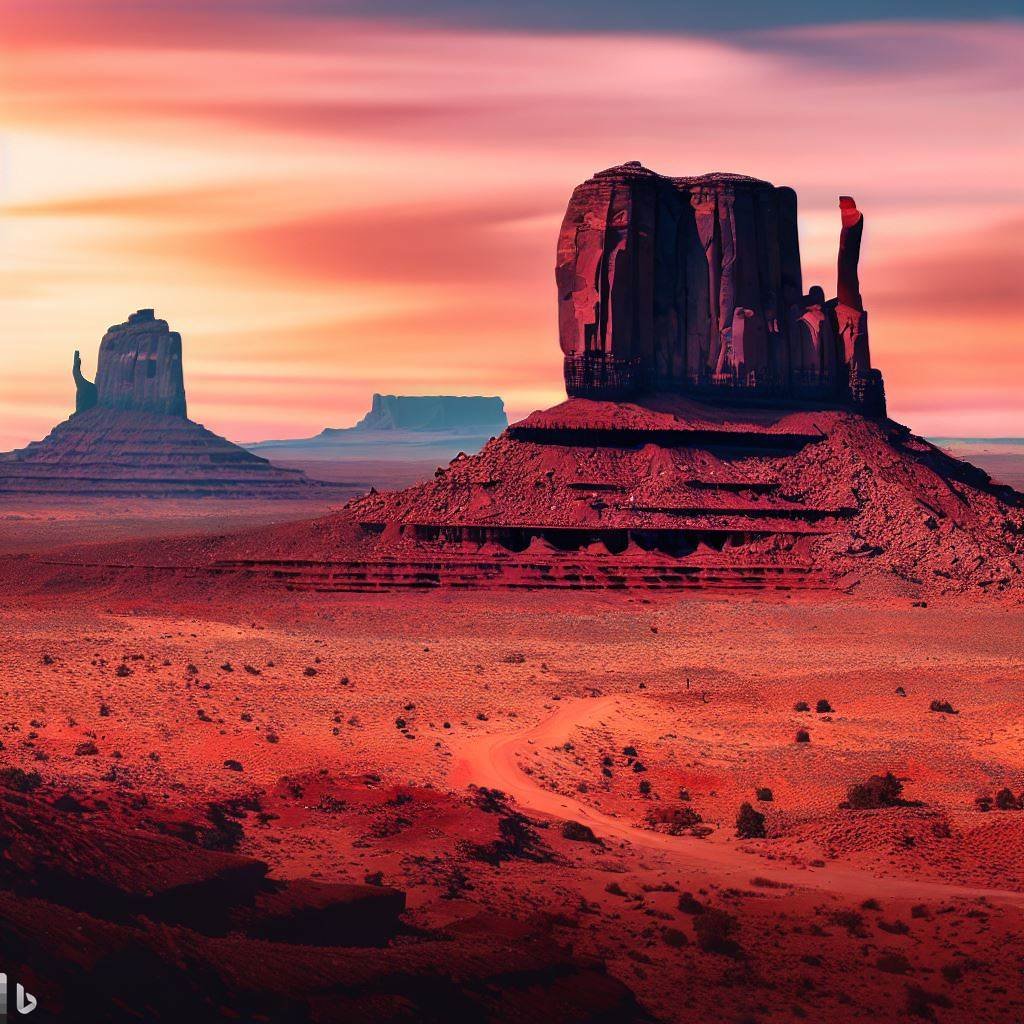In my last post about The Monument Valley (imaginatively titled Ode to The Monument Valley) I covered why I’m breaking with normal conventions by using the word ‘The” as a qualifier for The Monument Valley. So, I promise no more discussion on that topic, at least moving forward. Promise!
The Monument Valley is a place that is both beautiful and mysterious. The valley is filled with towering rock formations that seem to defy gravity. The rocks are so red and so tall that they seem to go on forever. It’s like looking at a painting that’s come to life. The sky is so blue and so clear that it makes you feel like you could reach up and touch it. It’s a place where you can see for miles and miles, and where the beauty of nature is on full display.
The valley is also a place where you can see how the forces of nature have shaped the earth over millions of years. The rocks in the valley are so old that they date back to the Jurassic period, which began over 200 million years ago. The different layers of rock in the valley tell the story of how the earth has changed over time. It’s a place where you can see how wind and water have carved out the landscape, creating something truly unique and awe-inspiring.
The valley’s vivid red color comes from iron oxide exposed in the weathered siltstone. The stark red cliffs are De Chelly Sandstone, which forms the cliffs of East Mitten and West Mitten, and so many of the other iconic rock formations of The Monument Valley. The darker, blue-gray rocks in the valley get their color from manganese oxide. The floor is largely siltstone of the Cutler Group, or sand derived from it, deposited by the meandering rivers that carved the valley. It’s a place where you can see how the forces of nature have shaped the earth over millions of years.

The tall cliffs of The Monument Valley are reminiscent of the Redwall Limestone that forms many of the prominent walls so characteristic of the Grand Canyon. Every trail that goes rim-to-river there has to find a way to navigate Redwall Limestone sooner or later, it is ever present, an ubiquitous obstacle. The De Chelly Sandstone that is the centerpiece of this landscape is similar in shape, with imposing cliffs and monoliths.
While the two varieties are from different times and share little in common besides being sedimentary rock, they have both become iconic, forever in our minds as part of the landscape of the American Southwest. Beside the difference we see in their age, we also find that De Chelly Sandstone was not deposited in marine conditions like the Redwall Limestone.
The Redwall Limestone is a resistant cliff-forming unit of Mississippian age that forms prominent, red-stained cliffs in the Grand Canyon, ranging in height from 500 feet (150 m) to 800 feet (240 m). The De Chelly Sandstone is of Early Permian age. The Mississippian period lasted from about 359.2 to 318.1 million years ago, while the Early Permian period lasted from about 298.9 to 272.3 million years ago. This means that the De Chelly Sandstone is younger than the Redwall Limestone.
Beside the difference we see in their age, getting up close and personal with the rock we also find that De Chelly Sandstone was not deposited in marine conditions like the Redwall Limestone. The heritage of this particular rock is windblown sand dune with crossbedding, so it was similar to sand dunes found today in the dune field of Death Valley National Park in California, or those seen at Great Sand Dunes National Park and Preserve in Colorado.
One more thing, did know the Redwall Limestone at the Grand Canyon isn’t actually red? That’s not on topic for an essay about The Monument Valley, (and I’m not done with The Monument Valley,) but I can almost guarantee I’ll write about it again. I’m sure I’ll write about Great Sand Dunes and Death Valley too – the more you know!




One Comment